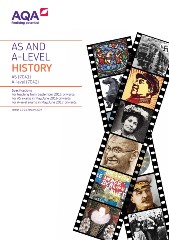2E The English Revolution, 1625–1660
This option provides for the study in depth of the challenges faced by those in authority in the years before, during and after the English Civil War. It explores concepts such as Divine Right; arbitrary government, Arminianism, and political and religious radicalism. It also encourages an in-depth understanding of how government works, arbitrary government and consensus, authority and opposition and issues of settlement.
Part one: the origins of the English Civil War, 1625–1642
The emergence of conflict and the end of consensus, 1625–1629
- The legacy of James I: religious issues and divisions; relations between Crown and Parliament; relations with foreign powers
- Monarchy and Divine Right: the character and aims of Charles I; the Queen and the court; the King's advisers; ideas of royal authority
- Challenges to the arbitrary government of Charles I: reactions against financial policies; conflict over Church; reactions against foreign policy and the role of Buckingham
- Parliamentary radicalism; personalities and policies of parliamentary opposition to the King; the Petition of Right; the dissolution of Parliament and the King’s commitment to Personal Rule
An experiment in Absolutism, 1629–1640
- Charles I’s Personal Rule: his chief ministers; methods of government; financial policies and the reaction against them
- Religious issues: Laud and Arminianism in England and Scotland; the growth of opposition from Puritans
- Political issues: the role of Wentworth; policies in Ireland and England; the reactions against the Crown; demands for the recall of Parliament
- Radicalism, dissent and the approach of war: the spread of religious radicalism; the Scottish Covenant and the Bishops' War; the Pacification of Berwick; the second Bishops' war
The crisis of Parliament and the outbreak of the First Civil War, 1640–1642
- The Political Nation 1640: the recall of Parliament; the strengths and weaknesses of Charles I; the strengths and divisions of parliamentary opposition
- Pym and the development of parliamentary radicalism: Pym’s personality and aims; the Grand Remonstrance; the London mob; popular radicalism
- Conflicts between Crown and Parliament: failure of negotiations between the King and the Long Parliament; the execution of Strafford and its political consequences
- The slide into war: the impact of events in Ireland; the failed arrest of the Five Members; local grievances; attempts to impose royal authority and the development of a Royalist Party; military preparations for war
Part two: Radicalism, Republic and Restoration, 1642–1660 (A-level only)
War and radicalism, 1642–1646 (A-level only)
- The First Civil War: the strengths and weaknesses of the political and military leadership of the Royalist cause
- The First Civil War: the strengths and weaknesses of the political and military leadership of the Parliamentary forces; emergence of the New Model Army; the Solemn League and Covenant; Self Denying Ordinance
- The intensification of radicalism: popular radicalism in London; religious radicalism in the New Model Army; pamphlets and propaganda
- The end of the First Civil War: divisions amongst the Parliamentary leaders; attempts at settlement; the capture of Charles I
The disintegration of the Political Nation, 1646–1649 (A-level only)
- Political and religious radicalism: the politicisation of the New Model Army; Lilburne and the Levellers; Fifth Monarchists; Ranters and other populist groups
- Political and religious divisions: the attitude and actions of Charles I; divisions within the opposition to the King; the failure of attempts to reach a political settlement
- The Second Civil War and the reasons for its outcome
- The problem of Charles I: divisions within the army and Parliament; the trial and execution of the King
Experiments in government and society, 1648–1660 (A-level only)
- The Third Civil War: the attempted Royalist revival; the defeat and exile of Prince Charles
- Political radicalism: failure of the Levellers and Diggers and the ‘Godly Society’; Quakers, Baptists and other radical sects; the Rump Parliament as an experiment in radical republicanism; the Parliament of the Saints
- Oliver Cromwell and the Protectorate: Cromwell’s personality and approach to government and his refusal of the Crown; the limits of religious toleration; the Major Generals; the problem of the succession to Cromwell
- The monarchy restored: political vacuum after the death of Cromwell; negotiations for the return of the monarchy under Charles II; the legacy of the English Revolution by 1660
